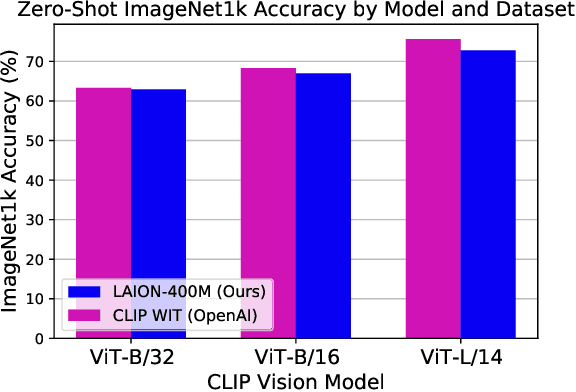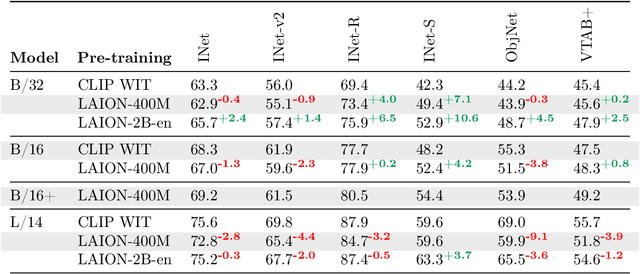Aarush Katta
LAION-5B: An open large-scale dataset for training next generation image-text models
Oct 16, 2022



Abstract:Groundbreaking language-vision architectures like CLIP and DALL-E proved the utility of training on large amounts of noisy image-text data, without relying on expensive accurate labels used in standard vision unimodal supervised learning. The resulting models showed capabilities of strong text-guided image generation and transfer to downstream tasks, while performing remarkably at zero-shot classification with noteworthy out-of-distribution robustness. Since then, large-scale language-vision models like ALIGN, BASIC, GLIDE, Flamingo and Imagen made further improvements. Studying the training and capabilities of such models requires datasets containing billions of image-text pairs. Until now, no datasets of this size have been made openly available for the broader research community. To address this problem and democratize research on large-scale multi-modal models, we present LAION-5B - a dataset consisting of 5.85 billion CLIP-filtered image-text pairs, of which 2.32B contain English language. We show successful replication and fine-tuning of foundational models like CLIP, GLIDE and Stable Diffusion using the dataset, and discuss further experiments enabled with an openly available dataset of this scale. Additionally we provide several nearest neighbor indices, an improved web-interface for dataset exploration and subset generation, and detection scores for watermark, NSFW, and toxic content detection. Announcement page https://laion.ai/laion-5b-a-new-era-of-open-large-scale-multi-modal-datasets/
LAION-400M: Open Dataset of CLIP-Filtered 400 Million Image-Text Pairs
Nov 03, 2021



Abstract:Multi-modal language-vision models trained on hundreds of millions of image-text pairs (e.g. CLIP, DALL-E) gained a recent surge, showing remarkable capability to perform zero- or few-shot learning and transfer even in absence of per-sample labels on target image data. Despite this trend, to date there has been no publicly available datasets of sufficient scale for training such models from scratch. To address this issue, in a community effort we build and release for public LAION-400M, a dataset with CLIP-filtered 400 million image-text pairs, their CLIP embeddings and kNN indices that allow efficient similarity search.
 Add to Chrome
Add to Chrome Add to Firefox
Add to Firefox Add to Edge
Add to Edge